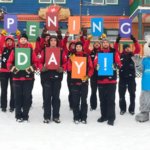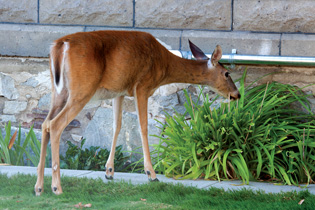 Moving to the city of Penticton after spending most of my life in close proximity to bears, wolves, coyotes, moose and deer, I expected more traffic, noise, and people. What I didn’t expect was more frequent encounters with wildlife. Our neighbourhood’s just half a block from one of Penticton’s busiest streets, yet we are treated to unsolicited episodes of pruning, applications of fresh manure, evening yap-and-howl jamborees, and graphic evidence that our pets are being culled.
Moving to the city of Penticton after spending most of my life in close proximity to bears, wolves, coyotes, moose and deer, I expected more traffic, noise, and people. What I didn’t expect was more frequent encounters with wildlife. Our neighbourhood’s just half a block from one of Penticton’s busiest streets, yet we are treated to unsolicited episodes of pruning, applications of fresh manure, evening yap-and-howl jamborees, and graphic evidence that our pets are being culled.
Coyotes are seldom welcome anywhere, but there was a time when a chance encounter with a deer would have us holding our breath in wonder, fearing the slightest movement would make the timid creature bolt for safety. Not any more. Yell, clap, wave your arms and jump up and down. Today’s urban ungulate is thoroughly unimpressed.
Daryl Myers has lived in the Sendero Canyon area of Penticton’s east bench for more than 20 years, on the edge of undeveloped land. Until recently, deer would rarely wander onto her street. “If you saw them, they would run away,” she says, but that’s changed. “Since 2011, they’ve made this their home.”
Indifferent to her presence, they climb her front steps to munch her shrubbery. Just three days after she erected a new fence, she found four of them bedded down in her back yard. When Daryl’s dog needs to use the yard after dark, she starts stress-barking as soon as she gets outside—probably just to get a sense of where exactly the deer are tonight. Daryl says they might twitch an ear or move their heads. “They certainly don’t get up.”
Some say this incursion is to be expected. After all, they were here first; it’s their territory. If so, where were they just a decade ago—and why are they taking it back now?
Even prior to development, the west side of the city wasn’t particularly good deer habitat. “The valley bottom, historically, was pretty swampy,” says Brian Harris, a biologist with the Ministry of Forests, Lands and Natural Resource Operations. “But a good portion of the east part of the city—all the benches up on the east side and the orchards and the subdivisions—same with the West Bench—is all right on mule deer winter range.”
The original orchards were relatively compatible with deer, but as compact high-density fruit trees became the norm, orchardists began fencing deer out. Today, those orchards are giving way to well-fenced vineyards; these spread further out and up our hillsides, as does the city itself. In 2011, the Sendero area was cleared of trees in preparation for urban development; now another substantial development is planned for the Spiller/Reservoir Road area.
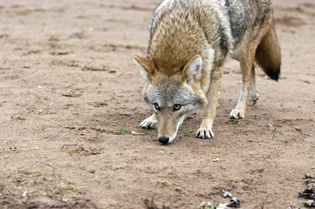 Displaced from the benchlands, what’s a deer to do? It’s colder uphill, where forest fire suppression has degraded their habitat. That’s where cougars live and smaller predators hunt in packs. But just downhill, there’s plenty to eat. Most backyard fences are easily jumped; then they provide ample protection against the elements and hungry coyotes, while dogs aren’t allowed to pack or attack.
Displaced from the benchlands, what’s a deer to do? It’s colder uphill, where forest fire suppression has degraded their habitat. That’s where cougars live and smaller predators hunt in packs. But just downhill, there’s plenty to eat. Most backyard fences are easily jumped; then they provide ample protection against the elements and hungry coyotes, while dogs aren’t allowed to pack or attack.
 From the deer’s perspective, it’s a no brainer. “There’s a good number of them that come in and winter in the city and then leave and go to the high country,” says Brian. But some, having tasted the good life, choose to take up permanent residence. He suspects that these are the deer that are causing people the most grief. “They don’t have the urge to migrate up the hill like they used to,” he says. “Now we’ve got generations—two, three, four generations—that have grown up in the city, and they don’t know any other life than ‘you stick around in the city, you eat rosebushes and dodge cars and dogs’; that’s what life is. They have no idea what it’s like to go up in the bush and avoid cougars and eat wild plants.”
From the deer’s perspective, it’s a no brainer. “There’s a good number of them that come in and winter in the city and then leave and go to the high country,” says Brian. But some, having tasted the good life, choose to take up permanent residence. He suspects that these are the deer that are causing people the most grief. “They don’t have the urge to migrate up the hill like they used to,” he says. “Now we’ve got generations—two, three, four generations—that have grown up in the city, and they don’t know any other life than ‘you stick around in the city, you eat rosebushes and dodge cars and dogs’; that’s what life is. They have no idea what it’s like to go up in the bush and avoid cougars and eat wild plants.”
Even summer forage in the city is superior to anything deer can get in the bush; it may not be any more nutritious, but it’s far more palatable. Brian says they’re like kids choosing french fries over spinach. Planting “deer resistant” vegetation is of little help, because there’s not much they won’t eat, especially if it’s green and healthy.
“We’ve created just an ideal situation for deer in the downtown,” says Brian. “The food that they’re eating has been pampered, fertilized, watered; there’s no predators other than cars and a few dogs; and no hunting allowed. It’s actually a pretty good environment for them.”
But why aren’t they afraid of us, as they once were? If fear is a learned behaviour, it’s one these deer seem to have un-learned. Each generation born in town is less timid, more ready to stand its ground. Those of us raised near wildlife, taught to steer clear of them and hope that they’d steer clear of us, find this behaviour a little disconcerting. How far will these deer go to defend this territory they’ve taken back?
Daryl knows first-hand what can happen when a deer stands its ground. Walking in the bush a few years ago, she noticed a doe with a fawn. Daryl and her dog waited while the doe shooed her fawn up the bank and was following it into the bush before resuming her walk. But the doe wheeled back down the hill and charged the dog. Fortunately the terrain kept the dog rolling away from the doe’s hooves, helping to prevent serious injury.
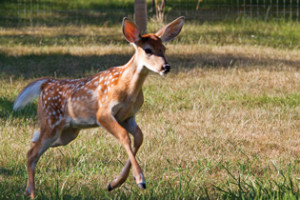 As Daryl points out, that type of encounter is to be expected when the deer are simply protecting their young, and that time she was in the deer’s space. But more recent encounters have been too close to home. “They’ve charged us in my front yard, and on the street,” she says. (Contrast this with the behaviour of the bear she found in her carport: it saw her and ran.) Steering clear of them isn’t easy when they’re between you and your ride to work, or on the path your kids take to school. Detouring or delaying once in a while is one thing, but these close encounters are happening more often as deer become more brazen, and more numerous.
As Daryl points out, that type of encounter is to be expected when the deer are simply protecting their young, and that time she was in the deer’s space. But more recent encounters have been too close to home. “They’ve charged us in my front yard, and on the street,” she says. (Contrast this with the behaviour of the bear she found in her carport: it saw her and ran.) Steering clear of them isn’t easy when they’re between you and your ride to work, or on the path your kids take to school. Detouring or delaying once in a while is one thing, but these close encounters are happening more often as deer become more brazen, and more numerous.
How many deer are too many? Brian says these urban deer are not doing any biological harm to themselves, and at the current densities there’s little likelihood of a disease or parasite becoming epidemic. So with no biological reason to do something to reduce their numbers, it’s a social decision: there are too many deer when enough people decide that enough is enough.
In Penticton that point was reached in 2011. City council responded to public pressure by agreeing to a cull, following the lead of Kootenay communities that had begun grappling with the same issue; Cranbrook’s program supplied food banks with over 500 kg of meat. But when a group opposed to the cull mounted a court case against the city of Invermere, these programs were put on hold. When courts ruled in Invermere’s favour, the theft and vandalism of the capture nets delayed Cranbrook’s cull once again.
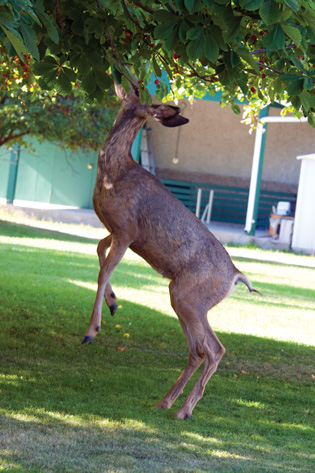 Hoping to avoid a lengthy and divisive consultation process and the subsequent conflict experienced in the Kootenays, Penticton’s city council decided on a $15,000 pilot program of capturing, tagging and relocating deer to land owned by the Penticton Indian Band, at an estimated cost of $1,000 per animal. In a similar program undertaken in 2010 in Republic, WA, contractors moved more than 50 deer to the Hellgate Game Reserve. By the fall of 2013, the Spokesman Review reported that landowners within a half-mile of Republic were being asked to grant access to hunters specially permitted to reduce the deer population. The Review suggested this cooperation may not be easy to obtain; the relocation contractors had called it quits because they were being threatened.
Hoping to avoid a lengthy and divisive consultation process and the subsequent conflict experienced in the Kootenays, Penticton’s city council decided on a $15,000 pilot program of capturing, tagging and relocating deer to land owned by the Penticton Indian Band, at an estimated cost of $1,000 per animal. In a similar program undertaken in 2010 in Republic, WA, contractors moved more than 50 deer to the Hellgate Game Reserve. By the fall of 2013, the Spokesman Review reported that landowners within a half-mile of Republic were being asked to grant access to hunters specially permitted to reduce the deer population. The Review suggested this cooperation may not be easy to obtain; the relocation contractors had called it quits because they were being threatened.
Penticton’s relocation plan met with swift opposition. Some felt it was expensive and impractical because the deer could just wander back; others saw it as a highly stressful way of moving these animals from where they were protected to where they could be hunted. Given the public outcry, council was likely relieved when restrictions outlined in a letter from the resource ministry effectively kyboshed the plan.
Daryl has mixed feelings: relocation would be traumatic for the deer and may not have worked. She understands that until people have experienced what she has been dealing with, they will continue to think these deer are no cause for concern. A “deer aware” education program could help minimize the risks.
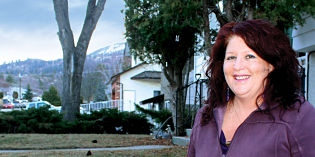 Proponents of “peaceful cohabitation” also suggest contraceptives could prevent the resident deer from multiplying. But with ongoing development on the benches, it seems likely that more and more deer will find it desirable to winter in town—leading some to speculate that their predators can’t be far behind. Recent events in the Coldstream area illustrate our lower tolerance for cougars in our communities; coyotes aren’t popular either. While it’s highly unlikely our streets will ever teem with hungry carnivores, an ounce of prevention is generally preferable to a pound of cure; why invite even one wild animal to its doom?
Proponents of “peaceful cohabitation” also suggest contraceptives could prevent the resident deer from multiplying. But with ongoing development on the benches, it seems likely that more and more deer will find it desirable to winter in town—leading some to speculate that their predators can’t be far behind. Recent events in the Coldstream area illustrate our lower tolerance for cougars in our communities; coyotes aren’t popular either. While it’s highly unlikely our streets will ever teem with hungry carnivores, an ounce of prevention is generally preferable to a pound of cure; why invite even one wild animal to its doom?
So the questions remain: Does something need to be done about the deer on our doorsteps? If so, what?
Meanwhile, some of those protesting the deer relocation program pointed to what they see as a more pressing issue: rats. They’re all over town, on schoolyards, in sheds, and in homes. A few residents with plastic waterlines have had to replace a substantial amount of plumbing, thanks to rodents seeking water in their crawlspaces and walls. (A public education program may be in order here, too; I recently saw a couple of teenage girls dangling a dead one by its tail as they posed with it for a selfie.) Fortunately, council’s likely to face a lot less controversy if they decide to tackle this one.
Rescued—or kidnapped?
Each year, wildlife rehabilitation centres deal with kidnapped fawns, healthy babies that were by themselves and mistakenly thought to be orphaned or abandoned. From the BC SPCA website:
- It is normal for a mother deer to leave her baby alone for periods of time. Remember that the mother deer will be wary of you, so your presence in the area could discourage her from returning. Leave the area.
- Keep pets away from the area.
- If you think the fawn is not being cared for by its mother, return the next day to check on it. If it is in the exact same spot and bleating (crying out), it may be orphaned.
If a fawn is badly injured or truly orphaned (the mother is dead), do not attempt to care for it yourself—it is illegal and can cause more harm than good. Call the BC SPCA’s Provincial Cruelty and Wildlife hotline 1.855.6BC.SPCA
(1.855.622.7722) or the Conservation Officer Service at 1.877.952.7277.
Closing the kitchen
A deer-resistant landscape may only work until they’ve polished of the tastier treats in your neighbours’ yards. But if you’d like to give it a try, search online or visit your local nursery for lists of their least favourite foods.
For tips on how to prevent damage to your landscaping see the Gardener’s Guide under Wildlife/Human Interaction on the Conservation Officer Service website at www.env.gov.bc.ca/cos.
As seen in
[downloads ids="11172" columns="1"]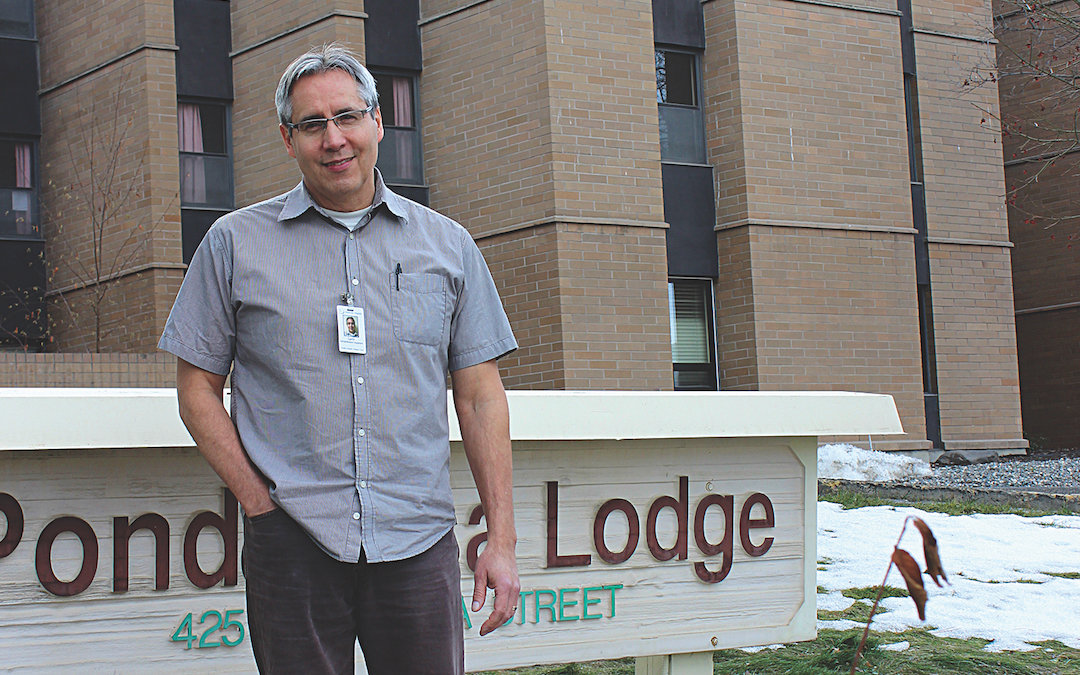
Bring your heritage to work
Rehabilitation assistant Garth Wale identifies as a husband, a dad, a brother, a 31-year employee of Interior Health; and a proud member of the Gitxsan First Nation.

Winter economics: rockets fuel local economy
Churning out NHL draft picks, world champions, Olympians and a record book to rival most in junior hockey, the Kelowna Rockets have found a winning formula under the tutelage of owner and general manager Bruce Hamilton.
Carnival Craze in Vernon
From smaller business-oriented gatherings to major events, winter is a busy time of year. The Vernon Winter Carnival has been going strong for 58 years. It’s known as the largest winter carnival in the west. Community dedication has been the secret to its success,...
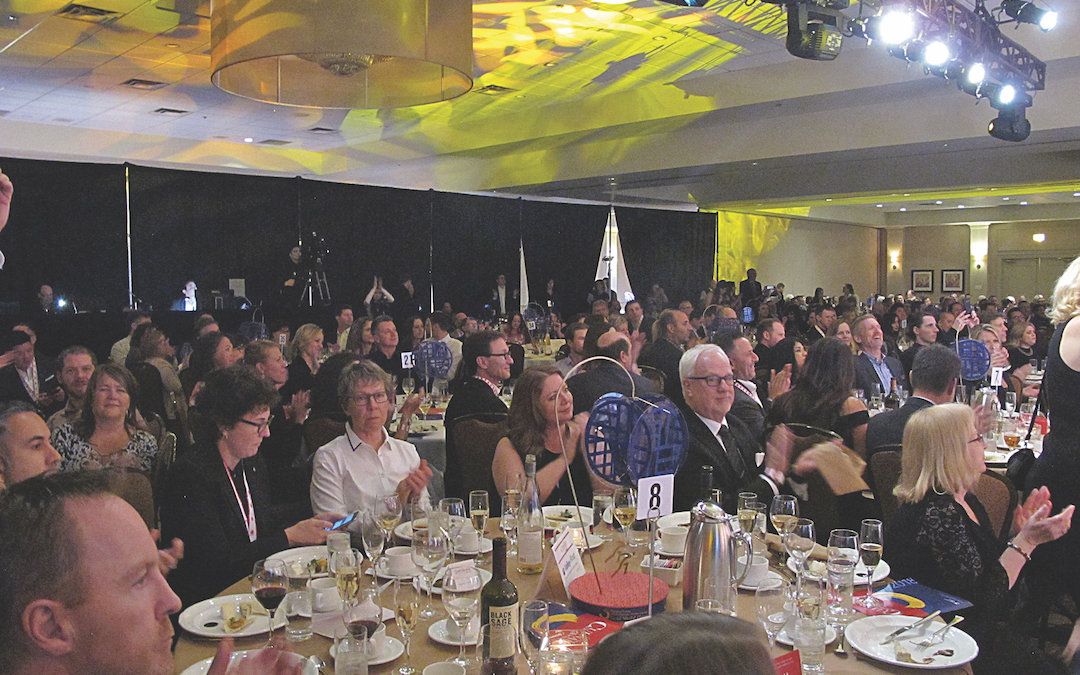
Hundreds from across Canada come to Kelowna in early February
Gold Medal Plates Kelowna is becoming a farm-to-table culinary destination, no matter what season. The city has been host to the Canadian Culinary Championships (CCC), affectionately known as Gold Medal Plates, since 2004 and has helped to generate over...

Winter economics: when the weather turns cold, business stays hot
In the Okanagan, we make hay when the sun shines and when the snow falls. The Valley is well known as a four-season playground; perhaps less known, it’s also a four-season economy. Key industries fire on all four cylinders throughout spring, summer, fall and winter.

Feature: Okanagan POTibilities
Cultivating the cannabis industry The business of legalizing marijuana is creating a buzz in the Okanagan. Whether you call it pot, weed or Mary Jane, cannabis becomes legal across Canada on July 1, 2018, when the federal government officially enacts Bill C-45. The...



